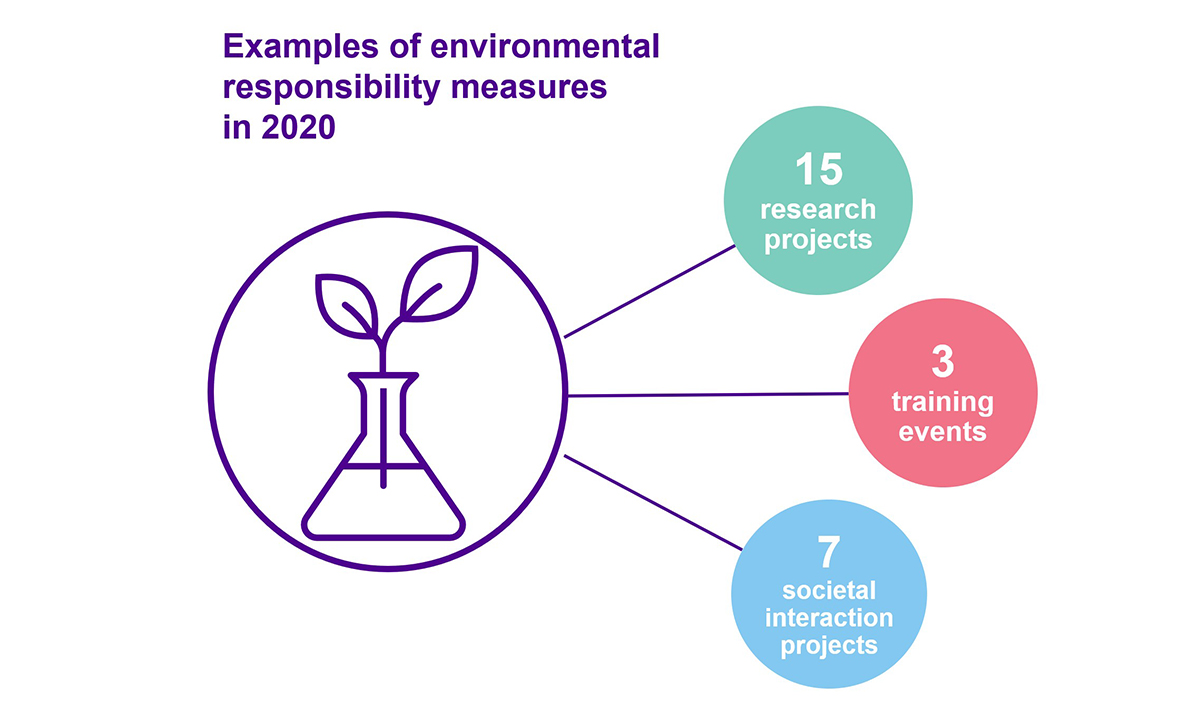
SDG 2 ZERO HUNGER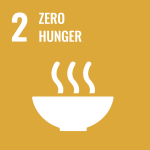
Dissertation explored urine utilisation as a part of sustainable agriculture
In his doctoral dissertation, Johannes Jermakka demonstrated how electrochemical methods can be used to capture nutrients from source-separated urine while simultaneously treating urine without the use of chemicals.
Nutrient recycling is an essential component of sustainable agriculture, and human urine is a valuable source of nutrients needed in food production.
Research collaboration promotes the reuse of organic waste for agricultural purposes
The Environmental Health research group at Tampere University has collaborated with Digi Toilet Systems Oy to verify the safety of a method developed by the company for recycling organic waste. The collaborative project was funded by the Ministry of Agriculture and Forestry of Finland.
In June 2019, the Finnish Food Authority approved the use of the method in the production of soil conditioner in the city district of Hiedanranta in Tampere. The approval is reportedly the first of its kind in the world. The Environmental Health group analysed the microbiological composition of the soil conditioner to ensure its safety.
Read more about the Environmental Health research group.
Research data on food waste
The Wastebusters research group at Tampere University studies how different stakeholders, such as consumers, communities, companies and other organisations, can participate in solving wicked problems such as food waste and the growing amount of waste produced in society. The group includes researchers specialising in marketing, management and sociology.
Wastebusters published eight scientific papers on food loss in 2020.
The publications are available online (in Finnish).
SDG 4 QUALITY EDUCATION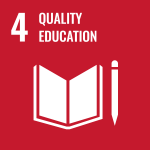
European universities support the transition to a carbon neutral society through sustainable architecture
Tampere University participates in ARCH4CHANGE, a collaborative undertaking between a number of European universities and associations that is funded under the EU’s Erasmus+ programme. The project seeks to co-create an architectural ‘climate emergency’ curriculum that supports the transition to a carbon neutral society.
Read more about the ARCH4CHANGE project.
SDG 6 CLEAN WATER AND SANITATION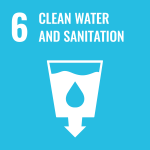
Study environmental engineering to address the challenges of sustainable development
The Faculty of Engineering and Natural Sciences (ENS) at Tampere University offers both Finnish-language and English-language degree programmes on environmental and energy engineering and bioengineering that provide students with information and tools for addressing sustainability challenges in society and industry.
For example, a course titled Introduction to Sustainable Development brings students together in small groups to discuss sustainability challenges and their solutions. While the courses place a special emphasis on the UN Sustainable Development Goals (SDGs) relating to environmental and energy engineering, all the seventeen SDGs are covered.
In the academic year 2020/2021, students enrolled on the degree programmes could also attend, for example, a course on resource recovery that explored the recovery and reuse of materials, such as nutrients and metals, in communities, industries and agriculture.
SDG 7 AFFORDABLE AND CLEAN ENERGY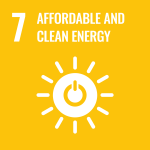
Harvesting energy form the movement of a cow called Carnation
A cow called Carnation living at Ahlman Vocational and Adult College in Tampere was fitted with small measurement devices in 2020 when David Blažević, a postdoctoral researcher at Tampere University, conducted a study to discover how animal motion can be harnessed to generate electricity.
The tests were carried out over a period of five days in mid-August while the cows at Ahlman were grazing in a field. This was the first time that energy harvesting, the conversion of ambient energy into electrical energy, was studied on cows in Finland.
Blažević is a member of the Electromechanics research group at Tampere University.
Read more about the Electromechanics group.
Network of experts explores Finland’s key energy-related challenges
The Finnish energy observatory (FEnO) is a network of experts that aims to address Finland’s most pressing energy challenges related to climate change.
FEnO has three overarching objectives: to monitor and disseminate relevant resources on key energy challenges in Finland (climate change, energy poverty, energy transition and urban development), provide an open space for discussion where experts from the Nordic countries share new perspectives, knowledge and insights with other EU/non-EU countries, and help the public and private sectors in Finland and the Nordic countries reduce inequalities in energy access.
Creating a resource-efficient electrical system is a collaborative effort
The EL-Tran consortium comprises researchers from Tampere University, the universities of Eastern Finland and Turku, Tampere University of Applied Sciences and the VTT Technical Research Centre of Finland. The consortium studies the development of a resource-efficient electrical system and its implementation. In addition, the consortium looks into the policy problems that may be encountered in the implementation of a resource-efficient electricity system and how they can be addressed in Finland and beyond.
Read more about the EL-Tran consortium.
Research collaborations to develop environmentally friendly energy ecosystems
The Prosumer Centric Energy Communities – towards Energy Ecosystem (ProCemPlus) project studies the formation of individual energy communities into broader business-oriented energy ecosystems by exploring several research themes and pilot cases related to the development of energy communities and by analysing the role of microgrids and energy communities in the energy ecosystem of the future. The perspectives included in the research project can be divided into four cross-disciplinary themes related to different microgrids and energy communities.
The project is funded by Business Finland. The consortium includes 11 companies.
Read more about the ProCemPlus project.
Collaborative project develops black liquor into biofuel for shipping and air transport
Black Liquor to Fuel (BL2F) is a Horizon 2020 project that examines the use of black liquor in the development of a clean high-quality biofuel. Black liquor is a side-stream of the chemical pulping industry that can be converted into fuel, reducing waste and providing an alternative to fossil fuels.
Launched in April 2020, BL2F will develop a first-of-a-kind integrated Hydrothermal Liquefaction (HTL) process for pulp mills that will decrease carbon emissions during the creation of the fuel intermediate, which will then be further developed in oil refineries to bring it closer to the final product and provide a feedstock for marine and aviation fuels.
The BL2F project brings together 12 partners from 8 countries around Europe. The consortium is composed of universities, research institutes, industrial partners and SMEs that bring together complementary skills and knowledge to achieve the project’s goals.
SDG 9 INDUSTRY, INNOVATION AND INFRASTRUCTURE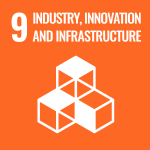
Major international project develops the reuse of reclaimed precast concrete elements in new buildings
ReCreate is a large-scale international project that studies the reuse of precast concrete elements. The project aims to find out how used concrete elements can be deconstructed without damaging them and reused in new buildings – and how the process can be turned into a profitable business. By reusing concrete elements, the construction industry can save an enormous amount of energy and raw materials.
The ReCreate project brings together industrial partners and building owners in Finland, Sweden, Germany and the Netherlands. The partners are exploring not only the technical implementation of the solutions but also the business perspective.
The four-year project has received funding under the EU’s Horizon 2020 programme.
Read more about the ReCreate project.
SDG 11 SUSTAINABLE CITIES AND COMMUNITIES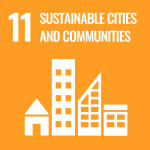
Tampere University takes part in developing low-carbon tourism
Tampere University participated in the Tampere City Sustainable Tourism Hub project in 2020. The project included surveys and workshops that focused, in particular, on supporting the low carbon development of the Särkänniemi district in Tampere.
Read more about the project on the Visit Tampere website (in Finnish).
Textbook and courses on sustainable urban design
The Landscape Architecture course, which is part of the Degree Programme in Architecture at Tampere University, was redesigned in the autumn of 2020 to increasingly incorporate sustainable development perspectives. The course examines, among other things, nature-based and ecological landscaping solutions. Students attending the course developed green street designs for the Ammattikoulunkatu street in Tampere.
The course reform was based on a textbook titled Arkkitehdin luontotieto, luonnon monimuotoisuus kaupunkisuunnittelussa, which was published in 2020 by Laura Uimonen, a postdoctoral researcher specialising in architecture at Tampere University. The textbook focuses on biodiversity-sensitive urban design and discusses sustainable development from a broad perspective.
Sustainable development goals and climate challenges were also discussed during Urban Modules, a continuing education module for urban design professionals which was implemented as a pilot project in the autumn of 2020.
Read more about the courses on sustainable urban design (in Finnish).
SDG 12 RESPONSIBLE CONSUMPTION AND PRODUCTION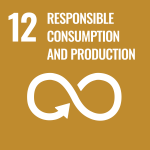
International research supports industry transition to composite recycling
The FiberEUse project seeks to integrate different innovative activities through a holistic approach to enhance the profitability of composite recycling and reuse in value-added products. With the help of new cloud-based ICT solutions for value-chain integration, the scouting of new markets, an analysis of legislative barriers and the life cycle assessment of different reverse logistic options, FiberEUse will support industry in the transition to a circular economy model for composites.
FiberEUse is a €9.8 million research project funded by the EU. The project was launched in June 2017 and involves 20 partners from seven EU countries.
Project to develop a sustainable alternative to carbon fibres
EUCAlyptus LIgnin VAlorisation for Advanced Materials and Carbon Fibres (Eucaliva) is a research project bases on the extraction of high-purity soluble lignin from chemical wood pulping processes.
The project will develop and set up a fully integrated, energy-efficient, scalable, innovative and flexible processing chain based on the valorisation of lignin for producing carbon fibres and other carbon-based materials, mainly for functional applications.
The project partners are developing a variety of applications: multifunctional film-like conductive, piezo-resistive and piezoelectric materials (for example for biosensors, flexible electrodes and stretchable electronics), smart fabrics and functional fibres as well as applications based on fibrous mats, non-woven fabrics and their carbonised derivatives (carbon-activated products).
Developing bio-based and degradable materials for industrial food packaging
The BioBarr project responds to the industrial and technological challenge of developing fully biodegradable food packaging.
The novel solutions applied in the project concern the smart combination of advanced technological elements, such as PHA biopolymers, new coating treatment technologies applied to PHAs and the development and application of a completely biodegradable bio-ink for printing on the PHA-based packaging.
The project is funded by Horizon 2020.
SDG 13 CLIMATE ACTION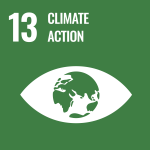
Flagship project helps businesses meet the climate goals of the Paris Agreement
The Atmosphere and Climate Competence Center (ACCC) is a Finnish Flagship working to address two of the most urgent global challenges: climate change and deteriorating air quality.
ACCC’s mission is to help Finland, EU and the world reach the goals of the Paris Agreement and adapt to climate change by developing sustainable, cost-effective and research-informed solutions and mitigating air pollution to sustain a healthy atmosphere.
ACCC is funded by the Academy of Finland and comprises researchers from the University of Helsinki, the Finnish Meteorological Institute, the University of Eastern Finland and Tampere University.
Tampere Universities pledge to become carbon neutral by 2030
Tampere Universities are committed to becoming carbon neutral by 2030. Tampere University and Tampere University of Applied Sciences took major steps in 2020 to promote their ecological, social and economic sustainability.
The journey towards net-zero carbon dioxide emissions takes sustained effort and systematic management, with the first step being the assessment of the university community’s current carbon footprint.
Tampere University calculated its carbon footprint
To lay a solid foundation for creating a greener campus, Tampere University completed its first carbon footprint calculations in the spring of 2020 to map out the emissions generated by travel and the campus buildings based on 2019 data.
The calculation of the overall carbon footprint of Tampere Universities was completed in the autumn of 2020. The main sources of emissions were travel, buildings and research infrastructures.
The work continues in 2021 with the preparation of a roadmap that outlines the steps we will take to become carbon neutral by 2030.
SDG 14 LIFE BELOW WATER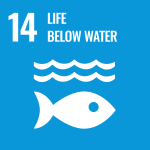
Researchers calculate the particulate emissions from shipping
In 2020, a team of researchers at Tampere University carried out a study where they calculated the particulate emissions from global maritime transport. Besides working under controlled laboratory conditions, they conducted measurements onboard an ocean vessel equipped with an exhaust gas cleaning system and while flying in an airplane or a helicopter through the exhaust plume of a vessel.
The annual particle number (PN) emissions from international shipping are largely equivalent to land-based PN emissions originating from human activity in continental areas. Vessels appear to remain a major source of PN emissions despite new regulations that limit the sulphur content of marine fuels.
Read the research paper to find out more.
New sampling methods for purifier sludge microplastics
Microplastics are under 5 mm in size. It has been estimated that more than 99% of microplastics are removed from water in municipal wastewater treatment plants, and large quantities of microplastics end up in sewage sludge. Now there are standardised methods for the characterisation of microplastics found in sewage sludge.
The Characterisation of Microplastics in Sewage Sludge project develops and validates sampling and characterisation methods for microplastics from sewage sludge and explores how selected sludge treatment processes affect microplastics.
SDG 15 LIFE ON LAND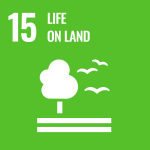
Study demonstrates a forest-based yard improves the immune system of daycare children
An experimental study coordinated by the Natural Resources Institute Finland (Luke) showed, for the first time in the world, that the immune system of daycare children of three to five years improved its regulation when forest undergrowth, lawn turf and planter boxes were added to the yard of daycare centres.
The research groups of Heikki Hyöty, professor of virology, and Juho Rajaniemi, professor of urban planning, from Tampere University participated in the study.
SDG 17 PARTNERSHIPS FOR THE GOALS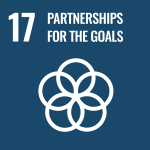
Project helps companies make the switch to digital
The ICT4LC project, which ended in 2020, set out to promote digital transformation and the adoption of energy-efficient low-carbon solutions in SMEs and organisations located in the Satakunta region, Finland.
The methods developed during the project enable organisations to self-assess the energy efficiency of their ICT solutions and the emissions they generate. The project raised awareness of electricity consumption in the modern communication infrastructure to help organisations make informed decisions about their choice of ICT.
Read more about the project (in Finnish).
Tampere University takes part in raising awareness of wood-based bioeconomy
Tampere University and Tampere University of Applied Sciences are involved in the New Wood community made up of more than 20 Finnish organisations. New Wood promotes wood-based bioeconomy and provides information to stakeholders and policymakers about the significance and value of wood-based products.
The goal of New Wood is to raise awareness of wood-based bioeconomy by highlighting new and existing products and solutions, exploring their impact on society, and offering expert perspectives on the outlook of this innovative industry.
Ekothon accelerates the transition to sustainability among regional stakeholders
The two-day Ekothon organised in the autumn of 2020 was a hackathon-inspired event that sought to foster collaboration among stakeholders and support the transition to a sustainable future in the Tampere region.
The event brought together companies, policymakers, academics, farmers, urban planners, citizens and city administrators to share ideas and work together. The goal was to integrate the solutions implemented by companies into municipal operations and promote the green transition across the region.
The Ekothon was organised by the Council of Tampere Region, Tampere University, the VTT Technical Research Centre of Finland, the Finnish Environment Institute (SYKE) and the Arts Promotion Centre Finland.
